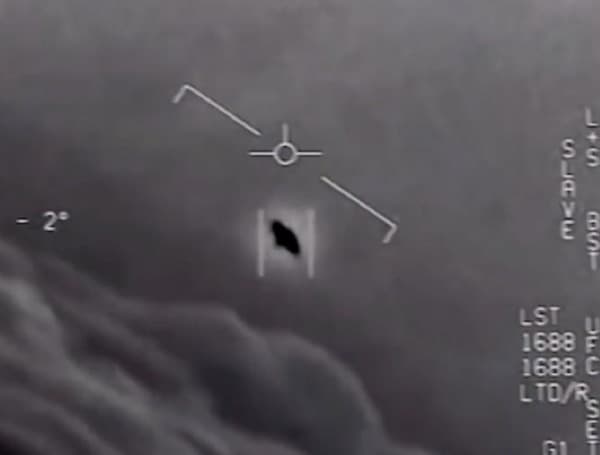The federal government’s long-awaited report on UFOs was released on Friday and did little to dispel the question of whether mankind is, in fact, alone in the universe.
The nine-page report, authored by the Office of the Director of National Intelligence, analyzed 144 reports of so-called Unexplained Aerial Phenomenon, or UAP, as chronicled largely by military pilots between 2004 and 2021.
The Intelligence Community didn’t specifically rule out UFOs, but it also didn’t rule them in.
“The limited amount of high-quality reporting,” the report stated, “hampers our ability to draw firm conclusions about the nature or intent of UAP.”
Most UAP reports “probably do represent physical objects given that a majority of UAP were registered across multiple sensors, to include radar, infrared, electro-optical, weapon seekers, and visual observation,” the report continued.
“In a limited number of incidents, UAP reportedly appeared to exhibit unusual flight characteristics. These observations could be the result of sensor errors, spoofing, or observer misperception and require additional rigorous analysis.”
The government said that if or when these reports are resolved, the findings could be dropped into one of five buckets: airborne clutter (birds, balloons, drones, etc.); natural atmospheric phenomena (ice crystals or “thermal fluctuations); U.S. government or U.S. industry developmental programs, foreign adversary systems, and “other.”
The feds acknowledged that UAP “clearly poses a safety of flight issue and may pose a challenge to U.S. national security.”
“Safety concerns primarily center on aviators contending with an increasingly cluttered air domain. UAP would also represent a national security challenge if they are foreign adversary collection platforms or provide evidence a potential adversary has developed either a breakthrough or disruptive technology,” the report said.
But, it added, “Limited data and inconsistency in reporting are key challenges to evaluating UAP.”
The inability to gather consistent and conclusive data was a theme revisited throughout the document.
For example, besides the lack of a consistent reporting mechanism, one reason the government could not get a fuller picture is that aviators and analysts are often fearful of speaking up because of “disparagement” from colleagues. The potential for “reputational risk may keep many observers silent, complicating scientific pursuit of the topic.”
Moreover, “The sensors mounted on U.S. military platforms are typically designed to fulfill specific missions. As a result, those sensors are not generally suited for identifying UAP.”
The report noted that some patterns do exist. For instance, the sightings tend to cluster around military installations. But this is likely the result of “collection bias” or super-sensitive, state-of-the-art sensors.
And the report admits that 21 reports seem to defy explanation, suggesting “unusual UAP movement patterns or flight characteristics. Some UAP appeared to remain stationary in winds aloft, move against the wind, maneuver abruptly, or move at considerable speed, without discernable means of propulsion.”
On 11 occasions pilots reported “near misses” with the UAP.
The report says analysts remain open to studying the matter further.
Then, we get to the root of the problem. Developing a “more sophisticated analysis of UAP that is likely to deepen our understanding” will require steps that are “resource-intensive” and “require additional investment.”
The good news there is that President Joe Biden is willing to have the Federal Reserve print money for every cockamamie scheme he can dream up.
Android Users, Click Here To Download The Free Press App And Never Miss A Story. It’s Free And Coming To Apple Users Soon.
Support journalism by clicking here to our gofundme or sign up for our free newsletter by clicking here
